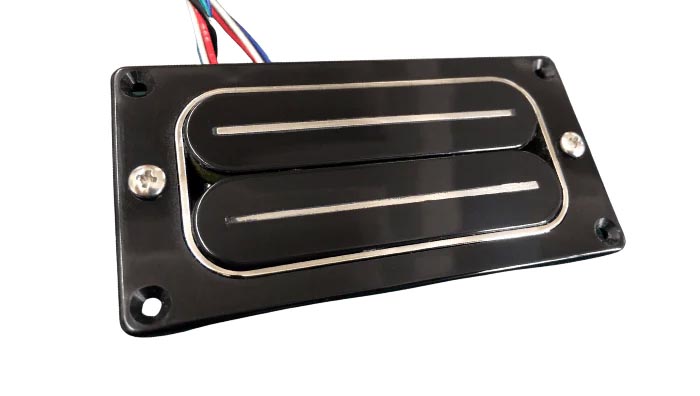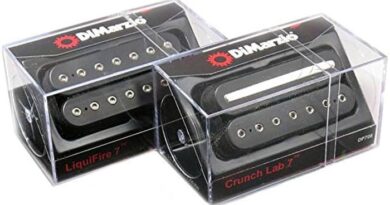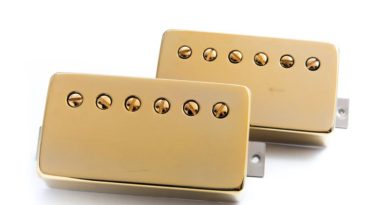Wilde Pickups L500 Humbucker Series
For most modern guitar players, the L500 series is the flagship of the Bill Lawrence menu. There are volumes of information on the history of Bill Lawrence and on the history of his many products. A significant point of reference is that he was making pickups before a few of the big names were even born.
There appears to be a lot of confusion, discussion, and debate about just what a “Bill Lawrence” pickup is. I’m leaving that for others to joust over. For the intents and purposes of this article, Bill Lawrence is German-born Willi Lorenz Stitch. And these humbuckers are the ones available from Wilde Pickups. That’s the company from which Bill and his wife Becky make and sell Bill’s products. Since Bill’s passing, it’s going strong with Becky and their daughter Shannon.
Here’s a great video from Becky and Shannon, discussing the L500 and it’s history:
Bill Lawrence and Tone
Want some eye-opening revelations that will change your perception about pickups? Dig into Bill Lawrence. His comments and findings from a literal lifetime as a musician and as a designer are worth your time. Be ready to have many conventional wisdoms up-ended for the sales and marketing jargon that most of it is. Check out Bill’s comments on Q Value, DC Resistance, and Inductance. Or his approach to magnet selection. A look around the Pickupology part of his website is a valuable endeavour.
L500 Series
Yes, there is a selection of the L500 model. I bought all 4 (four) for this evaluation. The break down as follows:
- L500C. This is the lowest in inductance and the lowest in DCR. The C is considered to mean “clean”. Supposedly was a L510R that was re-named L500C when the L510 series was merged with the L500 line.
- L500R. A step higher in inductance and DCR from the C. The R is for “rhythm”.
- L500L. More inductance and DCR. L is for “lead”. Like the C, it seems it started as the L510L and migrated to the L500 line as the L.
- L500XL. The highest in inductance and DCR. Originally the L500L and bumped to L500XL when the L510 line was combined.
Specs for each one will be down below.
Installation
These L500 models are all going in to an early 90s Washburn N2. Alder body, maple neck, rosewood fingerboard, 600-S double locking tremolo system. The original wiring harness is no more. In it’s place are Bourns 500k pots. Push/pull pot on tone knob for series/split on neck position. Other harness improvements are an Oak Grigsby 3-way lever switch and a Pure Tone 1/4″ output jack.
Methodology
The notion that I find behind the L500 series is that it can be seen (or rather, heard! LOL) as an pickup with an even balance to the tone. Think of something similar to a flat EQ graph. I’m not saying that’s what it has, but just throwing a visual out there. As such, imagine the same pickup at different outputs. That’s not the best analogy, as there are going to be inherent differences that come with the different levels of inductance and resistance. But just roll with me for a second. HaHa!
With that in mind, I forego the more currently traditional mindset of what pickup goes in which position. You’ll notice that Wilde doesn’t market them as “bridge” or as “neck”. Just as different models with different levels of inductance. See where I’m going here? If you’re thinking that I’m trying all models in the neck position, you win the prize! LOL! Why not? Jonny Lang uses a L500L in the neck. And the word is that Dimebag tried a L500R, L, and XL in the neck.
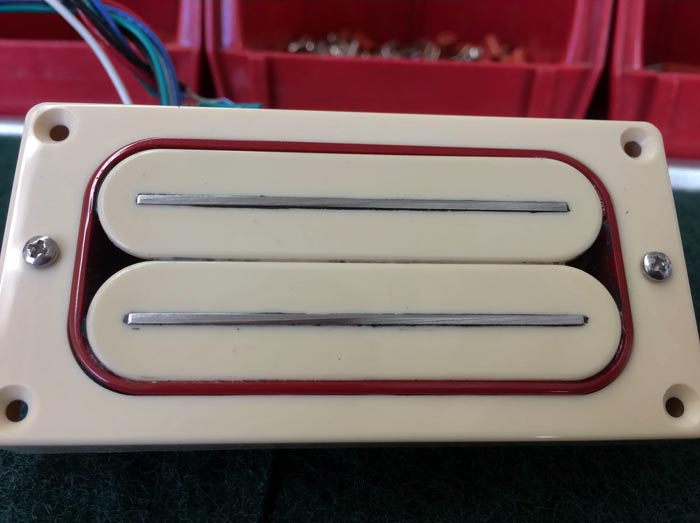
Evaluation
Out of the gate, I am starting with the L500L in the bridge and the L500R in the neck. I am finding this is one of the more versatile configurations to get a lot out of a single guitar. Not too much in the bridge and not too little in the neck. A real goldilocks setup. From there I move the XL in to the bridge to reveal more higher octane hot-rod results. Leaving the XL in place, I then go with the L in the neck and get a more rock/metal flavor that’s excellent for the more modern genres.
The L500C is a standout in how clean it can be. It is super airy and transparent, especially if you find most designated “neck” option too boomy or tubby. I do admit that I’m only trying this in the neck. My money is on a set of L500C in a singlecut or a hollowbody for some vintage style bliss. Even with the obvious difference between the C and the XL, it’s an obvious tonal match.
Remember, you can put whatever pickup in whatever position you want to get the results that you need. For example, want a crushing dirty tones and pristine cleans? The C in the neck and the XL in the bridge is for you! The key with the L500 series is to just imagine a similar voice, only at different levels of presence.
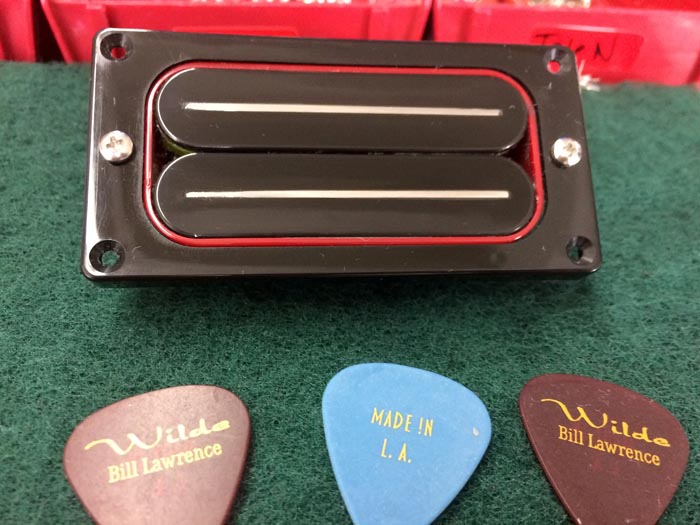
Design
There is no confusing the rail design of the L500 humbucker. The rails cover the span of the strings from E-to-E, which works to eliminate dead/weak spots one might experience between traditional poles. The thickness, or rather the thinness of the rails produces a very focused magnetic aperture. This is something that is part of the really tight characteristic. That narrow field also clamps down on chaotic harmonic crosstalk by focusing so specifically.
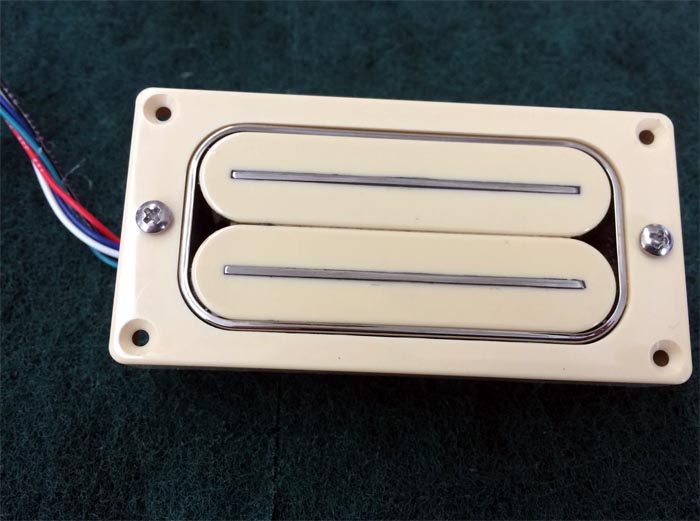
Bright vs Transparent
Some people suggest the L500 series is too bright. Sort of like the comments of titanium hardware being brighter than steel hardware. My response to both applies. It’s not that it’s bright, but that it’s transparent. The lion’s share of players are the product of years of playing with components that shape (re: add, or alter) tone more than be a pane of glass that the guitar and the hands pass through clearly.
The point here is that a tool like the L500 opens it up for more of the player’s own personality to become relevant. The following demos will help personify the concept. Besides, if you think it’s too bright, there are these really groovy knobs on the front of your amp that will do all sorts of funky things to adjust your tone.
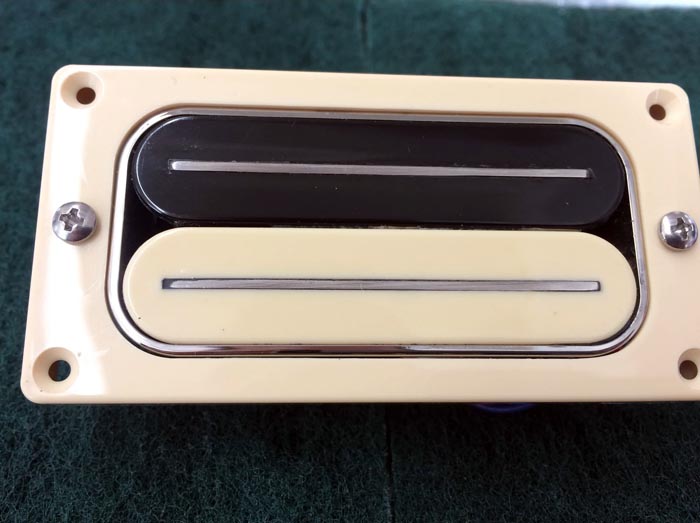
Demo
Sure, there’s going to be debate about a couple of these examples. I understand the grey areas. And I’m also basing the selections from talking with some of the people involved more than believing what some forum rat posts online. You guys are welcome to make the calls and send the emails for yourself. Otherwise, ease on down that road while the rest of us enjoy some hard-hitting jams. LOL!
Up first, how about some blues? Here’s a live performance from Jonny Lang, using the L500XL in the bridge and theL500L in the neck:
Becky says Dimebag was using a black L500XL w/ chrome housing for “Cowboys From Hell”. Of course we need to hear from that album!
And you bet we need some Nuno for this one:
Those 3 players are using the same or similar models. They cover their genres without sounding alike. And even while Dime and Nuno might be in different categories of hard rock, there is no confusion about which player is which when you hear them play.
Specs
Wilde L500 C
Series – 5.985 K
Inductance – 2.89 H
Split – 3.011 K
Split – 2.978 K
Parallel – 1.4985 K
Wilde L500 R
Series – 7.601 K
Inductance – 4.431 H
Split – 3.781 K
Split – 3.822 K
Parallel -1.9016 K
Wilde L500 L
Series – 12.001 K
Inductance – 6.447 H
Split – 5.932 K
Split – 6.083 K
Parallel – 3.002K
Wilde L500 XL
Series – 15.55 K
Inductance – 8.645 H
Split – 7.797 K
Split – 7.781 K
Parallel – 3.892 K
Marketplace Noise
There is a lot out there with regard to “Bill & Becky” and other companies that sell something supposedly similar. Like many types of markets and industries, things apparently happen. I certainly wasn’t there during certain meetings. I’m guessing 99% of the people reading this were also not in attendance. The interwebz is a source of many rumors for about the past 20 some odd years, which only amplifies the noise.
What about the Dimebag signature humbucker? What about it? Bill and Becky supplied Dime with a prototype. Something that falls between the L500L and the L500XL. The next thing you know, another company is selling something that looks practically identical to the L500 model. When Bill and Becky get their hands on one, their findings are that their prototype was taken to this other company and basically ripped off.
How about the company using the Bill Lawrence name? I have one of their products that came stock in a guitar. And I did compare them. My finding is that the Wilde X500 benchmark to be more musical and natural sounding, making it more adaptable for my goals. Other player I’ve spoken with about the two brands volunteered similar opinions.
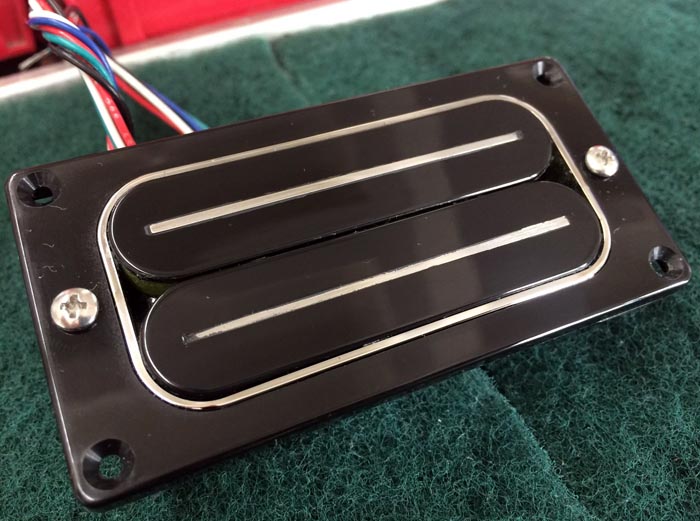
Conclusion
What is the L500 good for? More like, what’s it NOT good for? Depending on your model selection and guitar configuration options, you can cover just about anything you can imagine. Jazz, blues, pop, rock, metal, and all genres in between.
The L500 model is available with black, cream, or zebra bobbins. The housing options available are black, maroon, cream, and white. There is also a chrome housing available that will slightly mellow out the high end. Each L500 also come with a tall or a short (your choice) mounting ring in black or cream (also your choice).
For reference, this Wilde Pickups L500 series humbucker evaluation was conducted with a Fractal Axe-Fx II XL+ featuring Celestion Impluse Responses and Fractal MFC-101 MIDI Foot Controller. Real cabs are Marshall 1960B cabs with Celestion Vintage 30s and G12M Greenbacks.
Wilde Pickups Website | Facebook | Twitter | YouTube | Instagram
7 string 59 Alnico 2 Alnico 3 Alnico 4 Alnico 5 Alnico 8 Bare Knuckle BKP Brown Sound Celestion Ceramic Custom Shop Dean DiMarzio DMT Dual Resonance EVH Fishman Floyd Rose Fluence Gibson Humbucker Ibanez JB Jimmy Page John Petrucci MJ Mojotone P90 PAF Pariah Pickup Professor Guitarism Satch Satriani Schaller Seymour Duncan Singlecoil Single Width Speaker Steve Vai Tech Tip Tremolo Virtual Vintage

